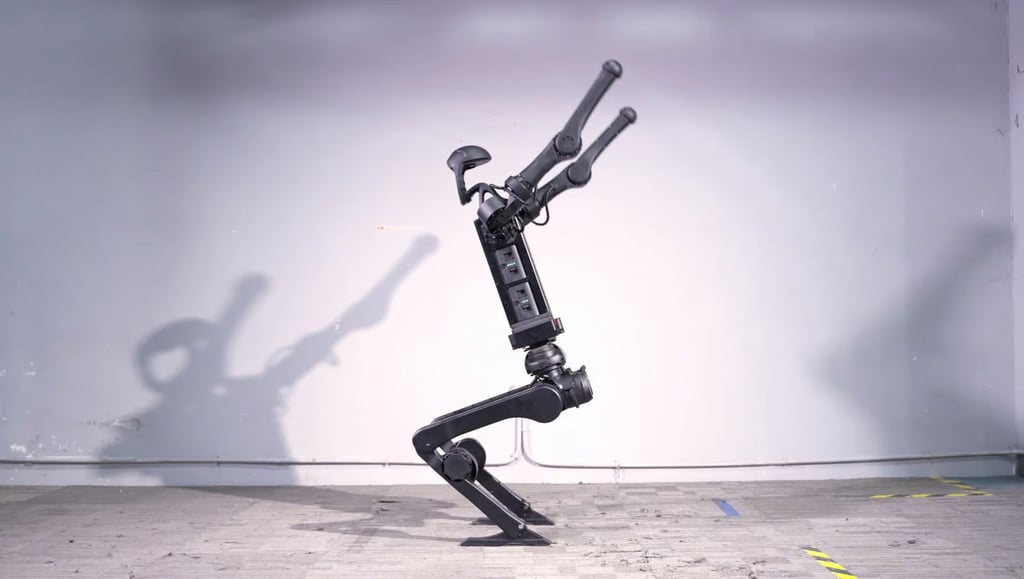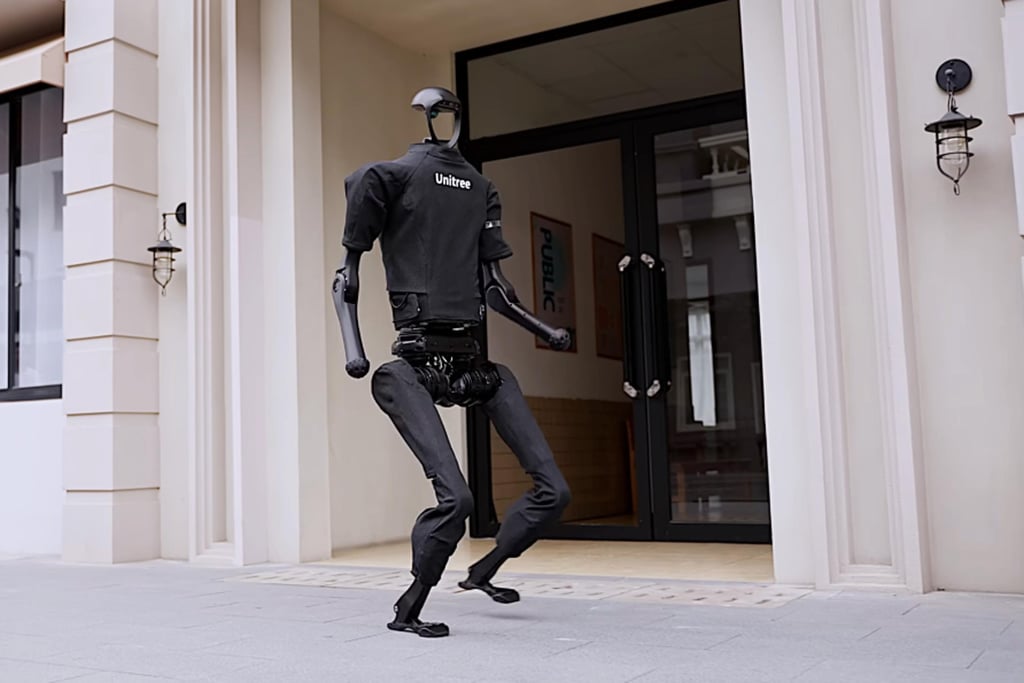Advertisement
Chinese robot’s backflip is a leap forward for electric-powered humanoid machines and nation’s push to lead industry
- Robot news site describes manoeuvre as ‘a pinnacle of intricate posture control, touching on several demanding areas of technology’
- Developer Unitree says core motors controlling joints are proprietary designs boasting maximum joint torque twice that of international competitors
Reading Time:2 minutes
Why you can trust SCMP
31

Zhang Tongin Beijing
A Chinese company has unveiled a video featuring a humanoid robot performing a backflip to land on the same spot, marking a world-first manoeuvre for a full-sized electric-powered robot.
In the clip the robot, named H1, draws its arms back to build momentum then propels itself upwards, flips in mid-air and makes a smooth landing


Following a quick recalibration, it regains balance and resumes an upright stance.
Advertisement
H1 is made by Unitree, a start-up based in the eastern Chinese city of Hangzhou. Unitree posted the video on its website on March 20.
“A backflip by an electrically powered humanoid robot represents a pinnacle of intricate posture control, touching on several demanding areas of technology,” a report on robotChina.com said.
Advertisement
“Key among these are the modelling of dynamics, the planning of movement, the design of real-time control systems and the development of hardware.”

Advertisement
Select Voice
Choose your listening speed
Get through articles 2x faster
1.25x
250 WPM
Slow
Average
Fast
1.25x